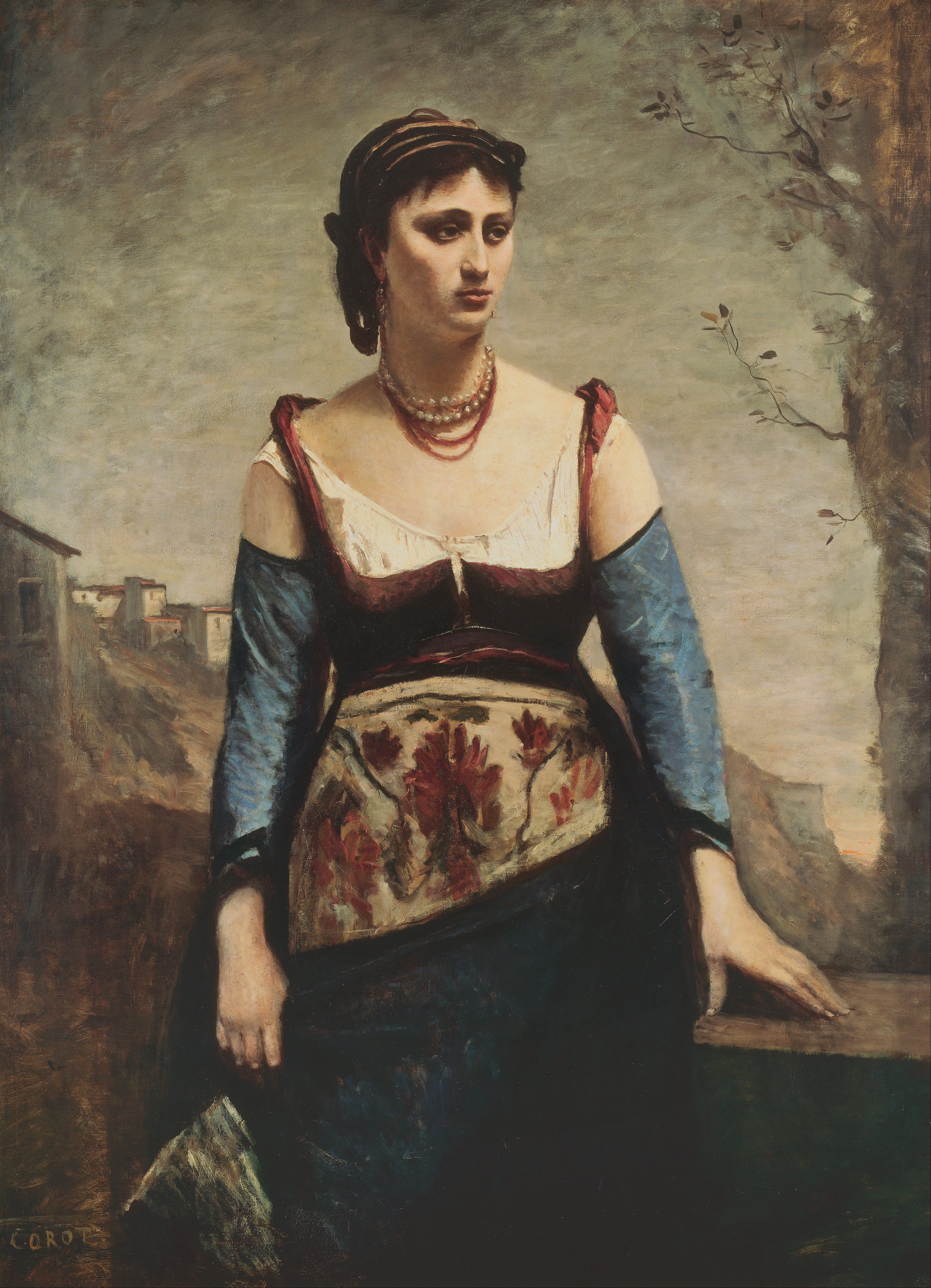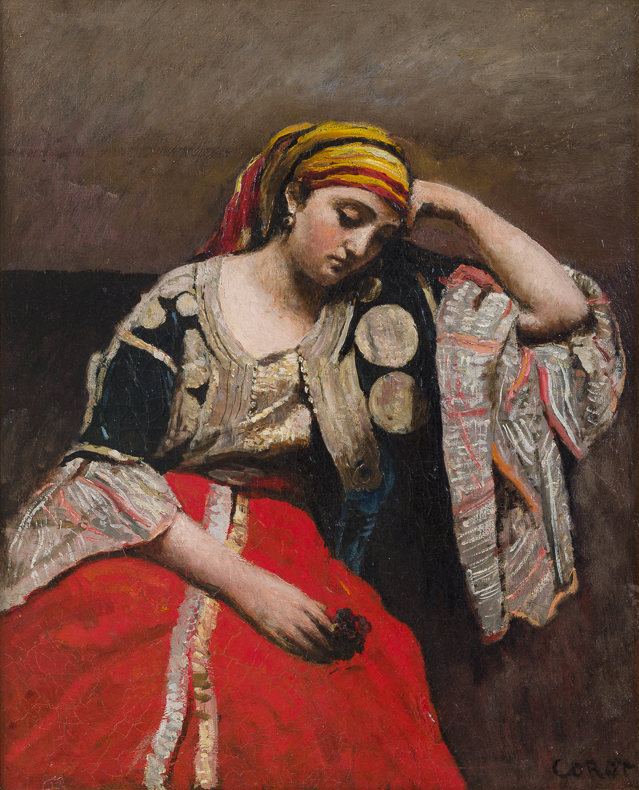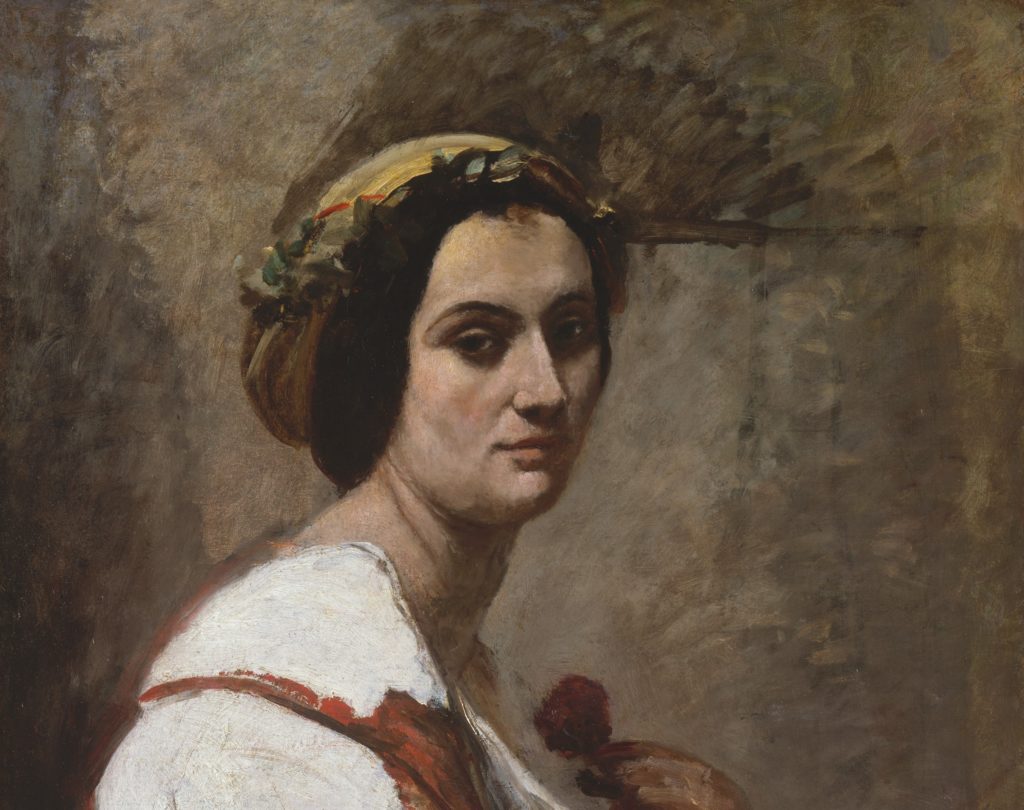It’s more than likely that the name “Corot” immediately elicits an idyllic scene of feathery trees bathed in the silvery light of the Ile-de-France; water might be gleaming somewhere in the picture, with a boatman in the distance, his red cap seasoning the expanse of subtly modulated gray-greens. The association is accurate. During his lifetime, as today, Jean-Baptiste-Camille Corot (1796–1875) was best known and most celebrated for his landscapes. Critics of the day acclaimed them, and nineteenth- and twentieth-century collectors in Europe and the United States responded to them enthusiastically, which accounts for the large number of pellucid Corot landscapes now in public collections. But throughout the five-and-a-half decades of his working life, and especially in his later years, Corot was also a painter of figures, usually solitary women, sometimes reclining nudes, bathed in form-accentuating light and painted with an economy and geometric rigor that make them seem at once classicizing and presciently modern. (The settings are sometimes as delicately brushed as the best-known landscapes, but the figures are always solid and substantial.) Corot’s figures constitute a far smaller part of his large oeuvre and, until after his death, were rarely seen outside of his studio. But discerning viewers, especially artists, greatly admired them, both in his day and afterwards. The list is impressive. There’s evidence that Degas thought Corot was better at painting figures than landscapes. Perhaps because of this, Degas’ friend and collector Henri Rouart owned a marvelous late painting of a standing woman, while Mary




